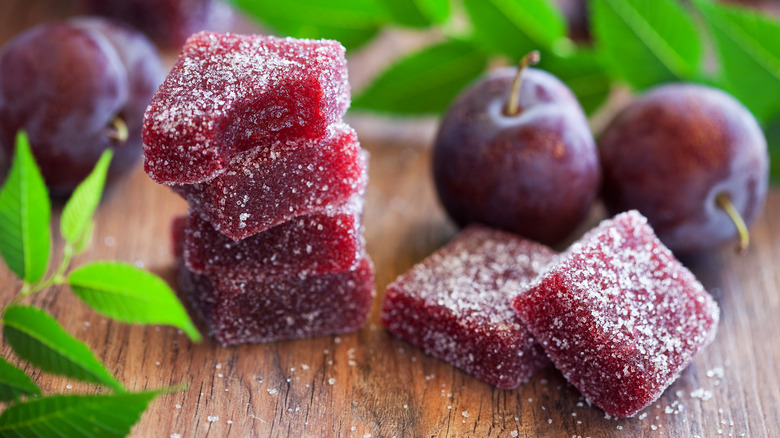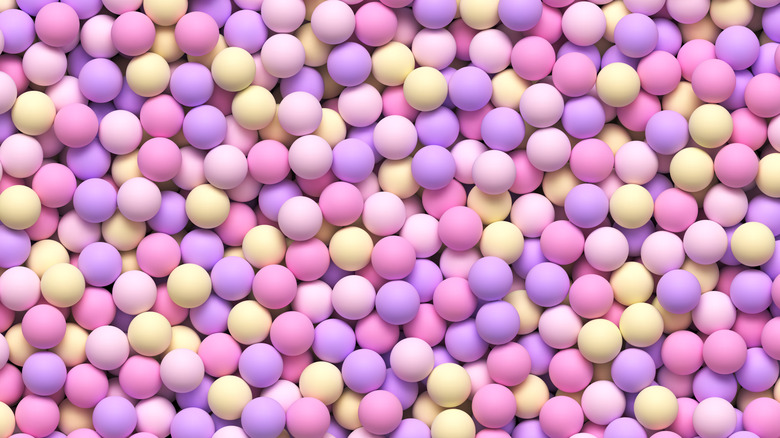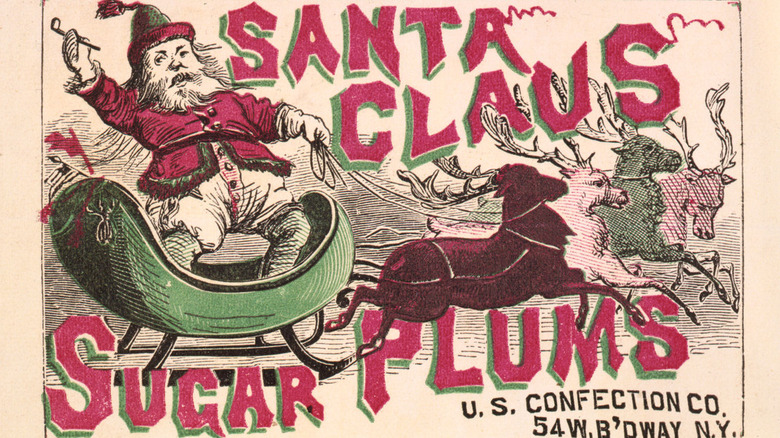The Plum-Free Origins Of Sugar Plums
From the shimmering, dancing fairy of "The Nutcracker" ballet to the candy-coated dreams of the children in "'Twas the Night Before Christmas," sugar plums conjure up a festive season of innocence. They are the enchanted bonbons found at the bottom of your stocking or strung across the Christmas tree like baubles. Yet what exactly were those old-time treats? Because, the truth is, they didn't contain a single morsel of plum.
As explained by Mental Floss, from the 1600s to the 1800s or so, the sugar plum (also known as a "comfit" or "dragée") was a popular candy made from just two key ingredients — sugar and a center of either seed, nut, or spice. Usually, these centers were almonds, caraway seeds, or cardamom seeds. As outlined by National Geographic, they could also be coriander, fennel, walnut, aniseed, cinnamon, or ginger, a spice with a 4,000-year history. But if there were no fruits involved at all, then how did these candies get their name?
Sugar plums were made using a secret process
Making sugar plums wasn't easy. Liquid sugar would be poured repeatedly over the nut or seed center until a hardened confectionary shell was formed around it. And to make sure that the sugar coating was forming evenly around the core, the sweets were rolled back and forth continuously in a hot pan over a low fire in a process known as "panning." Often, the confectioner would stop once there were around 30 layers of the smooth, glass-like candy shell, making it about the size of a plum. So the name "sugar plum" probably describes the size and shape of the sweet, not any fruity ingredients. As highlighted by DelightedCooking, a whimsical wire "plum stem" was sometimes added as a final flourish.
The whole enterprise could take several days, with everything carried out painstakingly by hand. The process was highly specialized to the point where confectioners could be quite secretive about the tricks they used to get their sweets smooth and spherical. In fact, as True Treats points out, an apprentice would practice for years to acquire the knack for the job. As a result, sugar plums weren't cheap. In fact, they were seen as an aristocratic indulgence, a between-course served at banquets, and a treat for special celebrations like Christmas. Sugar is becoming more expensive today, and the fancy treat was reserved for special occasions in earlier centuries.
Sugar plums had their roots in Middle Eastern medicine
But what did these exclusive sugar balls taste like? According to The Atlantic, the shells of sugar plums were similar to the ones on today's jelly beans, M&Ms, or jawbreakers. And if you want to try a sweet closer to the traditional concept, Mental Floss recommends getting hold of a packet of Jordan almonds.
However, as National Geographic points out, the comfit process wasn't just used for sugar plums. For instance, "tiny comfits" or "hundreds and thousands" (similar to today's rainbow sprinkles) were made by panning tiny seeds of celery. And the history of the comfit doesn't even begin in Europe — in fact, it was probably invented as a digestive medicine by Arabian apothecaries. In the Middle Ages, the remedy traveled to Europe via Italian sugar traders with comfits, eventually becoming an elegant after-dinner stomach settler and breath freshener in 14th century Paris. It's even said that a bored Henry VIII once pelted his guests with them (via English Heritage).
Over the centuries, the comfit evolved from medicinal treatment to elite confectionary treat, and then to the iconic Christmas sugar plum. And as True Treats explains, the latter would have looked like hard globes dyed in assorted rainbow colors. These would have included blue from indigo stone, yellow from saffron, and cochineal or mulberry juice for a red as vibrant as Rudolph's nose. And if a child was very, very good, they might just find a whole jar of them beneath the Christmas tree.


